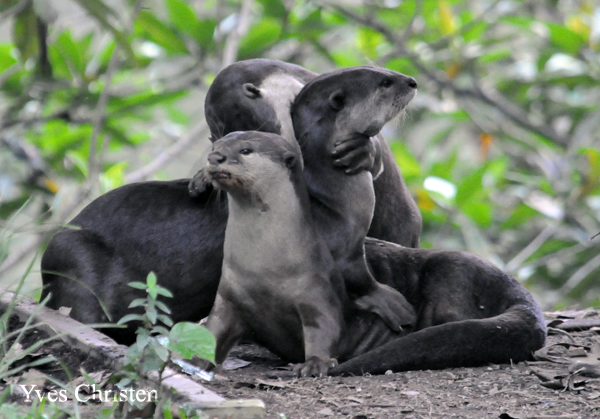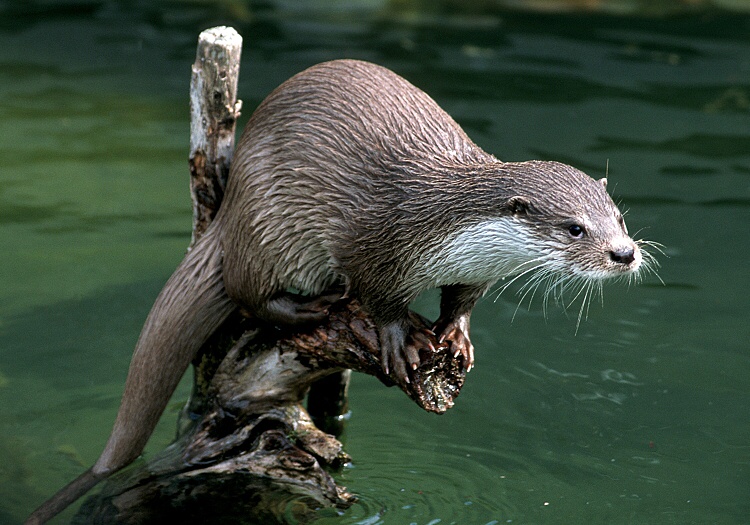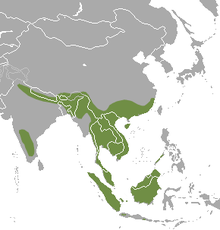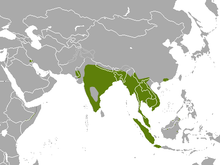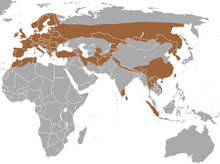New papers from the Himalayas, 2022-2023
- Jamwal, P.S., Bruno, A., Galimberti, A., Magnani, D., Casiraghi, M. & Loy, A. (2023). Environmental DNA revealed high accuracy in detection of the Eurasian otter in Himalaya. Aquatic Conservation: Marine and Freshwater Ecosystems, 1-12. https://doi.org/10.1002/aqc.4010
Abstract
- A precise framework of species occurrence and distribution trends is crucial for conservation measures. Traditional survey methods are often labour-intensive and time-consuming, and they can be ineffective in detecting the presence of rare and elusive taxa, especially in harsh environments.
- The effectiveness and feasibility of an environmental DNA (eDNA)-based approach was tested to detect the occurrence of the semiaquatic Eurasian otter (Lutra lutra) in six rivers in the Trans-Himalaya, comparing the results with those obtained from a traditional field survey.
- Water samples were collected and filtered on-site at 15 locations, from 2,660 to 3,819 m a.s.l. Otter scats were actively searched for at the same locations in a 900 m buffer along the river bank. Fifteen environmental parameters were recorded at each sampling site. After eDNA extraction and target quantitative realt-time polymerase chain reaction (qPCR) assay, statistical analyses were run to explore the relationship between environmental factors and the presence/ absence of otters at each site.
- Otter DNA was found at 73% of sites, whereas traditional field survey results showed that 53% of sites were positive for otters. Results from principal component analysis showed that the sites avoided by otters, as measured through eDNA, were clearly segregated along PC1 and PC2, with both axes explaining 57% of the cumulative variance. The best-performing generalized linear model suggested that the occurrence of otter eDNA was influenced by channel width, surface velocity, nitrate level, total dissolved solids, and average water depth.
- The results of this study highlight that, compared with traditional field surveys, eDNA-based methods increased the detection of positive sites by 20%, thus demonstrating their reliability for monitoring the presence of otters in the study area and providing new insights into the ecology of this species in the Indian Trans-Himalaya.
2. Mohan B. Shrestha, G. Shresthra, M. Maharjan, K.N. Shah. 2023. An unusual sighting record of Eurasian otter (Lutra lutra) in Kathmandu Valley, Nepal. OTTER: The Journal of the International Otter Survival Fund 64-71.
Abstract
The Eurasian otter (Lutra lutra) is a shy and solitary semi-aquatic species which is mainly nocturnal and prefers marshy places, rivers, lakes, seashores and estuaries. Contrary to the habit and habitat of the species, this report presents a Eurasian otter sighting in a built-up area at Chandragiri-6, Mahadevsthan, Chandragiri, in Kathmandu valley. One fresh carcass of a Eurasian otter was discovered in a human settlement area. The sighting of a Eurasian otter amidst this settlement area has resulted in queries requiring their exploration in rivers. primarily the Bagmati River. which could resolve the mysterious sighting.
Keywords: Otter carcass, Chandragiri, exploration, Bagmati River
3. Jyoti Bhandari, B.Rijal, R. Shau, D. Bijaya. 2023. Conservation status survey of Smooth-coated Otters (Lutrogale perspillata) in Babai River of Bardia National Park, Nepal. OTTER: The Journal of the International Otter Survival Fund 144-152.
Research entitled “Conservation status survey and awareness of smooth-coated otters in Babai River of Bardia National Park, Nepal”, was conducted along the Babai River and nearby villages within the project area. As part of the research, a questionnaire survey was conducted with 200 respondents in communities near the Babai River. During the survey, it was found that 72% of the respondents believed that the population of smooth-coated otters is low, and 61% of the respondents believed that the otter population will decline further in the next 5 to 10 years. Regarding the trend of otter population, 71% of the respondents mentioned that the otter population is decreasing. Illegal hunting of otters, illegal fishing, habitat destruction, and encroachment are the main causes of the decline in the otter population in the Babai River. Based on the findings of this research, it is recommended that conservation efforts be intensified to protect this smooth-coated otter population. This can include implementing strict laws and regulations to prevent illegal hunting and fishing, as well as increasing efforts to educate local communities about the importance of otter conservation and the negative impacts of habitat destruction and encroachment.
4. Purna Man Shrestha, S. Gwachha, S. Shrestha, A. Hamal, T.T. Tamang, B. Awasthi, S. Ghimire, R. Koju. 2023. People’s perceptions of the Eurasian Otter (Lutra lutra) conservation in Mugu District, Nepal. OTTER: The Journal of the International Otter Survival Fund. 128-143.
Abstract
This study aims to evaluate the perceptions and attitudes of people towards Eurasian otter conservation in Mugu District, Nepal. The social survey was carried out by interviewing local people in the river corridors of Mugu Karnali, Karnali and Khatyad rivers. Interviews were carried out through semi-structured questionnaires consisting of five categories: socio-demography of the respondent, fishing information, knowledge on otters, threats to otters, and perception towards the conservation of otters. A total of 90 people were interviewed – 92.22% male and 7.88% female with occupations of farmer, labourer, businessperson, student, and fisherman. The data obtained were analysed using Microsoft Excel. A total of 72.2% respondents go to the river frequently while 13.3% of respondents visit the river occasionally and 14.4% do not go to the river. The majority of fishermen have carried out fishing for 5–8 generations (47.54%) followed by 4–5 generations (31.14%), and 2–4 generations (21.31%). Different methods (gillnet, set net, hook, current net, etc.) of fishing were used during the day and night by 56.67% of respondents. 53.34% of respondents knew the morphological characteristics of an otter. 64.44% of respondents reported a drastic change in river dynamics. 34.44% of respondents had seen or heard about the killing of otters thereby threatening the survival of otters. 35.56% of respondents believed that otters still exist in these rivers. There have only been rare programmes regarding wildlife conservation carried out in the past years, and so they were unaware about the importance of otters and laws for their conservation.
5. Ranjana Pal, Aashna Sharma, Vineet Kumar Dubey, Tapajit Bhattacharya, Jeyaraj Antony Johnson, Kuppusamy Sivakumar, Sambandam Sathyakumar. 2021. A rare photographic record of Eurasian Otter Lutra lutra with a note on its habitat from the Bhagirathi Basin, western Himalayas, India. Journal of Threatened Taxa 13(13): 20072-20077.
Abstract: The Eurasian Otter Lutra lutra is an elusive, solitary animal that has one of the widest distributions of all palearctic mammals. Once widely distributed in Asia, the Eurasian Otter population is now vulnerable to urbanization, pollution, poaching, and dam construction. Eurasian Otter distribution in the Indian Himalayan rivers is little explored, and information from this high-altitude riverine ecosystem is sparse. This publication reports a rare photographic record of the Eurasian Otter which confirms its presence in the high-altitude temperate forest of the Upper Bhagirathi Basin, western Himalayan region. The otter was recorded during investigations of terrestrial and aquatic fauna in the Bhagirathi Basin (7,586 km2, 500–5,000 m) of Uttarakhand State, India from October 2015 to May 2019. Among aquatic fauna, Brown Trout were found to be abundant in high altitude river stretches, with a catch per unit effort of 1.02 kg h–1. Additionally, 26 families of freshwater macroinvertebrates underscored a rich diet available for the Brown Trout, which in turn is a potential food source for the otters. The riverine ecosystem is undergoing dramatic changes because of the increasing demand for hydropower plants in the Bhagirathi Basin. Although mitigation measures are currently in place for fish, the presence of otters further necessitates the need for targeted management for high-altitude Himalayan rivers. There is an imperative need for intensive otter surveys using methods such as camera traps in riparian habitats along the Bhagirathi River and its tributaries.
6. Acharya, P.M., Saeung, S., Techato, K., Rimal, N., Gyawali, S., and Neupane, D. 2022. Review of Environmental Policies and Otter Conservation in Nepal. IUCN Otter Specialist Group Bull. 39(1): 44 – 55.
Abstract: Nepal has several policies and legal provisions for species conservation, but no specific protection for otter species. This study aims to identify the legal provisions of Nepal. Protecting riverine animals, including otters, by analyzing legal documents and publications describing environmental policies as they apply to the conservation of riverine species. The review suggests that development projects in the country are not following the provisions of environmental impact studies during project formulation, implementation, or monitoring. Established policies emphasize the conservation, restoration, and effective management of wetlands for biodiversity and environment conservation. Minimal effective implementation of the unified Wetland Acts and regulations and a lack of coordination among related agencies are the major gaps in the conservation of otters in Nepal.
7. Paras Mani Acharya, Panu Thainiramit, Kuaanan Techato, Suraj Baral, Naresh Rimal, Melissa Savage, Ahimsa Campos-Arceiz, Dinesh Neupane. 2023. Predicting the Distribution and Habitat Suitability of the Smooth-coated Otter (Lutrogale perspicillata) in Lowland Nepal. Global Ecology and Conservation 46. https://doi.org/10.1016/j.gecco.2023.e02578
Abstract
Ever increasing anthropogenic pressures and natural threats to freshwater ecosystems are impacting global biodiversity. Otters are an indicator species that have an important role in maintaining the integrity and stability of wetland ecosystems. A lack of information on essential variables of otter ecology in the Himalaya range, including suitable potential habitat and site occupancy hampers otter conservation. In this study, we analyze the geographic range, and habitat suitability of the Smooth-coated otter (Lutrogale perspicillata) in lowland areas of Nepal. Using 655 presence points collected between 2013-2018, we created habitat suitability models using an ensemble of small models (ESMs) derived from MaxEnt techniques to understand the variables influencing Smooth-coated otter distribution in the country. The model predicted the distribution of Smooth-coated otters with high accuracy (AUC = 0.89±0.03, Boyce’s Index = 0.95±0.02). The model identified distance to water, precipitation in driest month, Normalized Difference Vegetation Index, precipitation in warmest quarter, and precipitation in driest quarter as the top five weighted variables that highly influenced the habitat suitability of Smooth-coated otters, and identified 12 core areas with 14 potential linkages in only 2374 km2 of highly suitable habitat in Nepal. Importantly, suitable habitat was found to be highly concentrated in protected areas, particularly in Bardia and Shuklaphanta national parks, having only greater permeability of linkages. At the provincial level, all seven provinces had very small amounts of highly suitable habitat, excepting Sudurpaschim Province with 19.82% and Lumbini Province with 5.18% of highly suitable habitat, likely due to the abundance of natural freshwater lakes and aquaculture ponds. While accounting for little land area, the aquaculture ponds may provide important prey sources for otters, and consequently may create conflict with local farmers in future. Appropriate management intervention, including habitat restoration, the integration of otter conservation strategies into wetland policies, specifically in the Ramsar site management plans are urgently needed for the survival of the species in Nepal.

